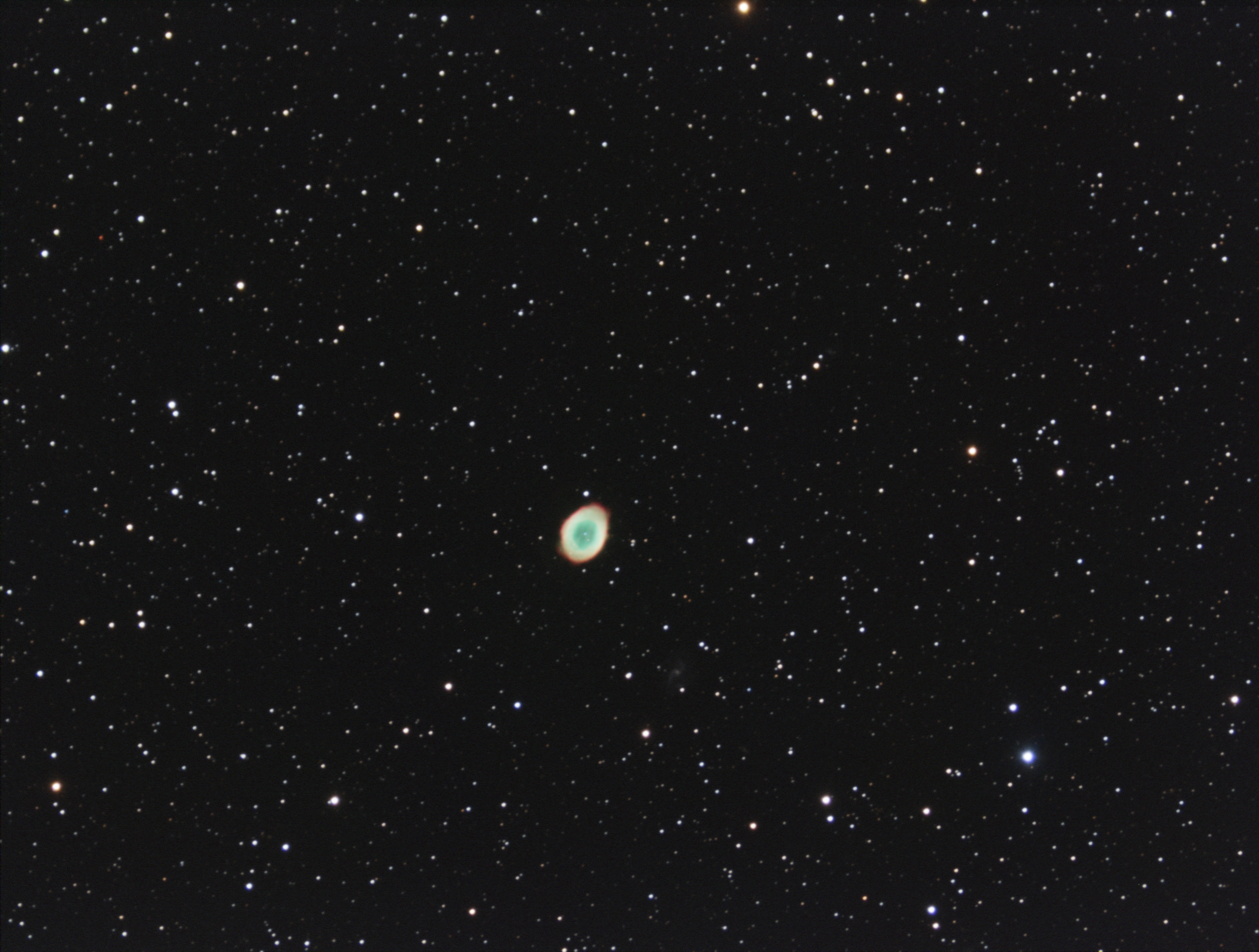The Ring Nebula (M57) is one of the most iconic planetary nebulae in the night sky, located in the constellation Lyra approximately 2,300 light-years from Earth. Discovered in 1779 by Antoine Darquier de Pellepoix and Charles Messier, this stunning celestial object represents the final stages of a medium-sized star’s life, similar to what the Sun will experience in several billion years.
M57’s characteristic ring-like shape is due to its structure: a glowing shell of ionized gas expelled by a dying star. This gas is illuminated by the nebula’s hot central white dwarf, whose intense ultraviolet radiation excites the surrounding material. The nebula’s vibrant colors—greenish-blue in the center and reddish along the edges—arise from specific elements, primarily oxygen and hydrogen, undergoing ionization.
Spanning about 1 light-year across, the Ring Nebula appears compact and almost perfectly round through amateur telescopes, making it a popular target for stargazers. Its intricate details, revealed through larger telescopes and astrophotography, showcase its dynamic and evolving nature, providing insights into stellar death and cosmic recycling processes.
I made this picture with a Stellarvue 4″ APO refractor and a ZWO ASI1600MM with an RGB filter wheel. I made about 12 3-minute subs in each color. I processed it with PixInsight.
